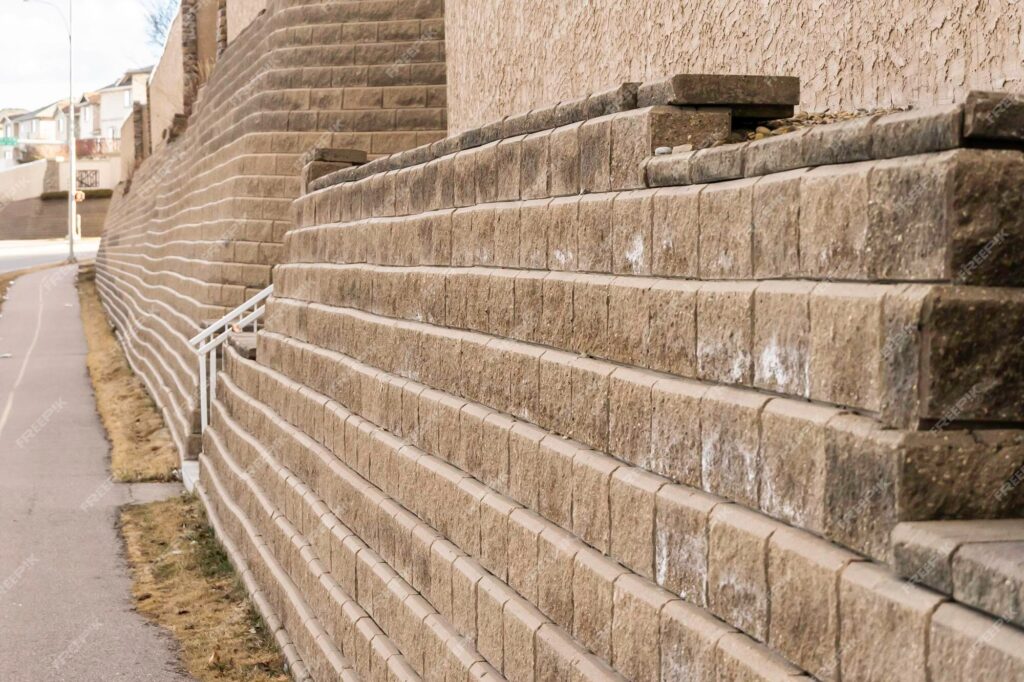Retaining walls are a workhorse in landscaping and construction. While their visual appeal often garners attention—after all, who doesn’t appreciate the clean, structured look they bring to a property?—retaining walls also provide a range of practical benefits that go far beyond aesthetics. From stabilizing slopes to managing water flow, retaining walls are an essential element for functional outdoor spaces.
Whether you’re planning a new project or maintaining an existing structure, understanding the practical value of retaining walls can help you make smart, informed decisions about your property.
1. Erosion Control for Sloped Landscapes
If your property is on uneven terrain, erosion can be a persistent challenge. Rainwater runoff, wind, and the natural movement of soil can quickly destabilize your landscape, potentially leading to costly damage.
A retaining wall provides a robust solution by holding soil in place, preventing it from washing away during heavy rainfall or storms. By stabilizing the land, retaining walls extend the lifespan of your outdoor spaces and protect structures like patios, driveways, and walkways from damage caused by shifting earth.
2. Preventing Flooding and Managing Water Flow
One often-overlooked function of retaining walls is their ability to manage water flow. By directing stormwater away from vulnerable areas, retaining walls reduce the risk of flooding and water damage on your property. Integrated drainage systems—such as weep holes or perforated pipes within the wall—enable water to flow through designated pathways rather than pooling where it doesn’t belong.
For properties prone to heavy rain or seasonal weather changes, this feature alone can make retaining walls a worthwhile investment.
3. Maximizing Usable Space
For many homeowners and businesses, working with sloped land means sacrificing usable outdoor space. However, retaining walls can transform hilly or uneven areas into level, functional zones.
By creating terraces or flat surfaces, retaining walls open up multiple possibilities for landscaping features like gardens, seating areas, or even play zones for children. They effectively reimagine your property, optimizing every square foot for utility and enjoyment.
4. Enhancing Structural Stability
Retaining walls don’t just benefit properties with significant slopes—they’re also an excellent tool for improving overall structural stability. They provide support to neighboring structures, such as fences or buildings, by reducing soil pressure that could otherwise weaken foundations over time.
For businesses operating in areas with heavy foot traffic or vehicles, a well-constructed retaining wall can also act as a protective barrier, ensuring added safety and durability for the surrounding infrastructure.
5. Increasing Property Value
Beyond their functional advantages, retaining walls can positively impact your property’s value. Prospective buyers view them as an indicator of thoughtful landscaping and practical design. Functionality paired with an aesthetically pleasing structure—using materials like natural stone, concrete, or timber—can significantly enhance curb appeal and set your property apart in competitive markets.
Maintenance and Repair Considerations
Like any structure, retaining walls require occasional upkeep to maintain their functionality and appearance. Signs of wear, such as bulging, cracks, or drainage issues, should be addressed promptly to avoid further damage. If your wall needs attention, searching for retaining wall repair near me can connect you with local experts who can assess and resolve issues efficiently.
Creating a Strong Foundation for Your Property
Retaining walls are much more than decorative features—they’re strategic investments in your property’s durability, functionality, and value. Whether you’re building from scratch or maintaining an existing wall, prioritizing quality materials and experienced craftsmanship will ensure your retaining wall provides long-term benefits.
By integrating retaining walls into your outdoor spaces, you’re not just solving current challenges; you’re future-proofing your property against erosion, water damage, and space constraints, all while elevating its overall appeal.




